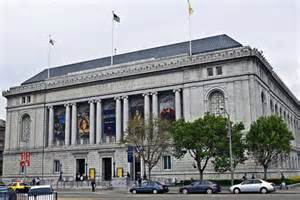- Jun 26 2023
Asian Art Museum of San Francisco
San Francisco, CA
Into View: Bernice Bing celebrates the museum’s acquisition of 20 paintings and works on paper that shine a light on an important local Asian American artist who has only recently gained broad recognition for her achievements. These works reveal the evolution of Bing’s remarkable practice, from paintings of the 1950s and 1960s that straddle Abstract Expressionism and figuration to work from the 1980s and 1990s that explores a synthesis of Zen calligraphy and Western abstraction.
Born in San Francisco’s Chinatown in 1936, Bernice “Bingo” Bing (1936–1998) spent her childhood bouncing between an orphanage and foster homes. She attended California College of Arts and Crafts (now California College of the Arts), where she studied with Richard Diebenkorn and Japanese painter and theorist Saburo Hasegawa, who introduced Bing to Zen Buddhism, Chinese philosophers, and traditional calligraphy. She completed her B.F.A. and earned her M.F.A. at the California School of Fine Arts (now the San Francisco Art Institute), where she studied with painters such as Elmer Bischoff and became enmeshed in the city’s Beat Era art scene.
In the 1980s, Bing’s work began to display the influence of her Buddhist practice and of traditional Chinese art, stretching the boundaries of Modernism. In 1984, she spent three months in China studying calligraphy and traditional ink landscape painting. Her work following that formative trip evolved toward a synthesis of calligraphy and abstraction, and she often chose titles for her paintings that reference the Lotus Sutra. Her last major work, Epilogue (1990–1995), serves as a resume of her artistic development; abstract clusters, some suggesting figurative forms and others calligraphic sources, are arranged in a 24-foot-long linear composition that reads like the unrolling of a handscroll. This epic composition reveals the diverse and evolving influences of Bing’s practice, inviting further consideration of the artist’s unique and multifaceted identity.
The exhibition shows how Bing’s perseverance as a queer Asian American woman fueled her achievements as a catalyst in the Bay Area cultural scene during the second half of the 20th century.
Credit: Exhibition overview from museum website
Exhibition Venues & Dates
- Jun 26 2023
Asian Art Museum of San Francisco
San Francisco, CA
